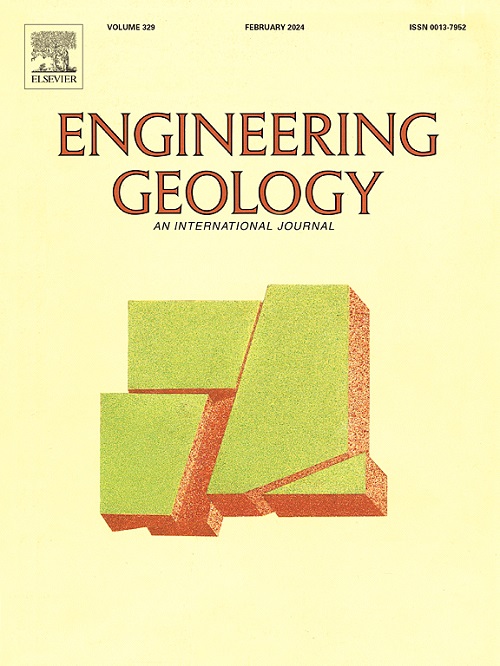Submarine gravity flows and their interaction with offshore pipelines: A review of recent advances
IF 6.9
1区 工程技术
Q1 ENGINEERING, GEOLOGICAL
引用次数: 0
Abstract
The increase in offshore exploration for oil and natural gas has raised concerns about the safety of pipelines in the face of submarine slides, debris flow, and high-density turbidity currents. These submarine gravity flows constitute significant marine geohazards as they undermine the structural integrity of offshore pipelines, underscoring the importance of understanding the complexities of the dynamic interaction process. We herein present a comprehensive review of the complex interactions between submarine gravity flows and offshore pipelines. Emphasis is on the influence of pipeline characteristics, environmental factors, and flow properties on the impact force exerted on the offshore pipeline and the overall interaction process. Recent literature indicates that implementing modified pipeline designs, such as streamlined shapes and advanced design materials, can effectively minimize drag and lift forces, thus potentially reducing the risk of damage by submarine gravity flows. This underscores the need to combine sophisticated engineering designs and durable materials to protect offshore pipelines. This paper provides an in-depth understanding of the interaction between submarine gravity flows and pipeline infrastructures, suggesting the implementation of real-time monitoring technologies, novel pipeline materials, and the adoption of innovative designs that can withstand adverse seafloor environments and effectively mitigate the risk of sediment-induced damage in landslide-prone regions. The article summarizes existing knowledge on mitigative technologies and recommends areas for further investigation to improve the safety and durability of submarine pipelines.
求助全文
约1分钟内获得全文
求助全文
来源期刊

Engineering Geology
地学-地球科学综合
CiteScore
13.70
自引率
12.20%
发文量
327
审稿时长
5.6 months
期刊介绍:
Engineering Geology, an international interdisciplinary journal, serves as a bridge between earth sciences and engineering, focusing on geological and geotechnical engineering. It welcomes studies with relevance to engineering, environmental concerns, and safety, catering to engineering geologists with backgrounds in geology or civil/mining engineering. Topics include applied geomorphology, structural geology, geophysics, geochemistry, environmental geology, hydrogeology, land use planning, natural hazards, remote sensing, soil and rock mechanics, and applied geotechnical engineering. The journal provides a platform for research at the intersection of geology and engineering disciplines.
 求助内容:
求助内容: 应助结果提醒方式:
应助结果提醒方式:


